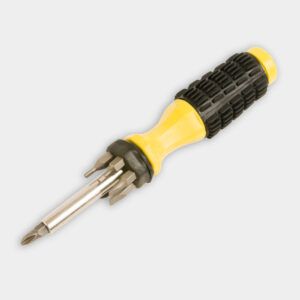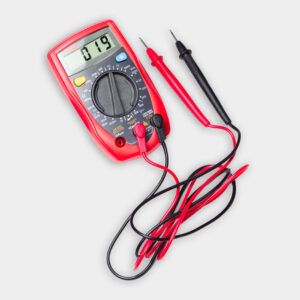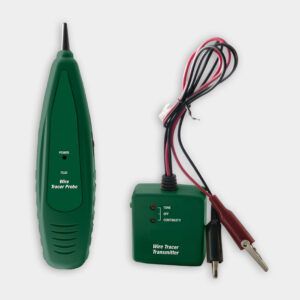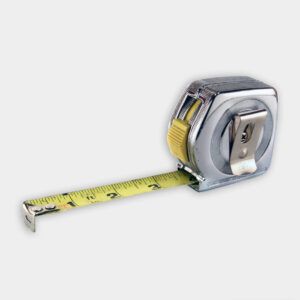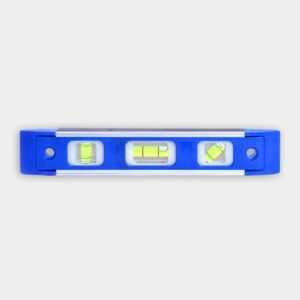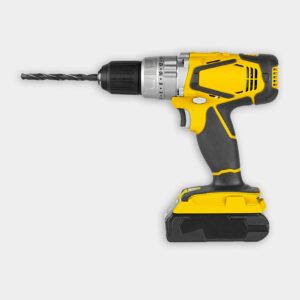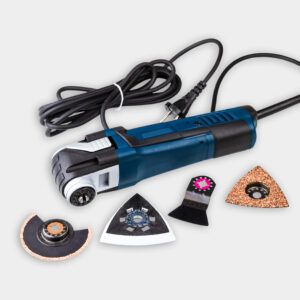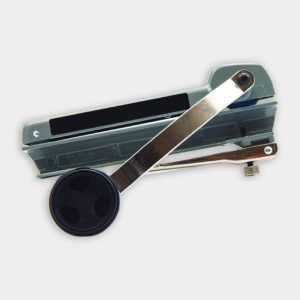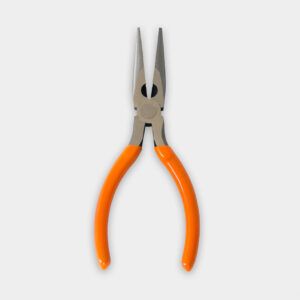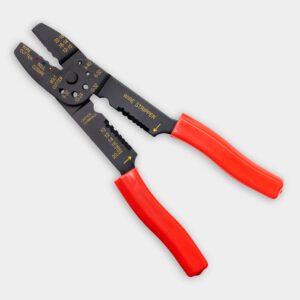We may be compensated if you purchase through links on our website. Our team is committed to delivering honest, objective, and independent reviews on home products and services.
Project details
Skill
Cost
Estimated Time
A kitchen island without electrical outlets can be inconvenient, limiting your ability to use appliances and charge devices in a central workspace. Fortunately, adding an electrical receptacle to your kitchen island is an accessible project that can significantly enhance its functionality. This Old House master electrician Heath Eastman demonstrates the process of installing an electrical outlet on a kitchen island, addressing a common issue faced by many homeowners after kitchen renovations.
Understanding the Need for Kitchen Island Outlets
Kitchen islands have become a staple in modern home design, offering additional counter space and storage. However, they often lack essential electrical outlets, which can hinder their usefulness. The National Electrical Code (NEC) requires at least one receptacle for the first nine square feet of countertop space on an island, with additional outlets for larger areas.
Code Requirements for Kitchen Island Outlets
The NEC specifies the following requirements for kitchen island outlets:
- One receptacle for the first nine square feet
- An additional receptacle for the next 18 square feet
- A third receptacle for any remaining space up to 18 square feet
These regulations ensure that homeowners have convenient access to power throughout their kitchen workspace.
Benefits of Adding an Outlet to Your Kitchen Island
Installing an electrical receptacle on your kitchen island offers several advantages:
- Increased functionality for using small appliances
- Convenient charging stations for devices
- Improved workflow in the kitchen
- Enhanced safety by reducing the need for extension cords
Preparing for an Electrical Receptacle Installation
Before beginning the installation process, assess your kitchen’s electrical setup and gather the necessary tools and materials.
Assess Your Kitchen’s Electrical Setup
Start by locating the existing electrical box within the island, if present. In some cases, wires may have been run during a previous renovation but not connected to an outlet. Before proceeding, use a noncontact voltage tester to ensure any existing wires are not energized.
Tools and Materials Needed
To complete this project, you’ll need the following tools and materials:
- BX cable cutter
- Cable connectors and bushings
- Electrical multimeter
- Electrical toner (optional)
- GFCI receptacle tester
- Lineman’s pliers
- Metal electrical box
- Metal-clad wire (BX)
- Needle nose pliers
- Noncontact voltage tester
- Oscillating multitool
- Outlet and cover plate
- Painter’s tape
- Pencil
- Power drill and bit
- Screwdriver
- Tape measure
- Torpedo level
- Wire nuts
- Wire strippers
Step-by-Step Installation Process of an Electrical Receptacle on a Kitchen Island
Follow these steps to install an electrical receptacle on your kitchen island:
- Turn off the power to the kitchen area at the main breaker panel.
- Locate the existing electrical box or wires within the island.
- Use the electrical toner to trace the wires back to their source if necessary.
- Choose an ideal location for the new receptacle, typically on the end of the island away from seating areas.
- Mark the electrical box’s outline on the island using painter’s tape and a pencil.
- Cut out the opening for the box using an oscillating tool, drilling pilot holes first.
- Install the new electrical box in the opening, securing it to the island.
- Cut a section of metal-clad wire to length using a BX cutter.
- Attach connectors to both ends of the wire and secure them to the electrical boxes.
- Connect the wires in the existing box to the new ones using wire nuts.
- Wire the outlet in the new box, connecting ground, neutral, and hot wires to their respective screws.
- Secure the outlet in the box and attach the cover plate.
- Restore power and test the new outlet using a GFCI receptacle tester.
In the video, Eastman demonstrates these steps, offering valuable insights into the installation process.
Important Details
When turning off the power at the main breaker, it’s important to verify that the correct circuit is de-energized. Use a noncontact voltage tester to double-check your work. Once confirmed, begin locating the wires within the island. If you encounter difficulty, consider using an electrical toner to trace the wires back to their origin.
Choosing the ideal location for the new receptacle is crucial for accessibility and convenience. Typically, this is on the end of the island opposite seating areas, ensuring that cords and devices do not interfere with foot traffic.
Marking the outline of the electrical box with painter’s tape and a pencil helps prevent damage to the island’s surface during cutting. An oscillating tool with a fine-toothed blade can make precise cuts, minimizing the risk of splintering. Secure the electrical box firmly to avoid any movement once it is in use.
Cutting the metal-clad wire to the exact length required ensures a clean installation. Attach cable connectors and bushings to protect the wire and secure the connections. Wire nuts provide a secure and insulated connection between the existing and new wires. Follow the wire color conventions: connect ground wires to ground, neutral wires to neutral, and hot wires to hot.
Once all connections are made, secure the outlet in the box and attach the cover plate. Restore power and use a GFCI receptacle tester to ensure the outlet is properly wired and functioning safely.
Safety Considerations When Working With Electrical Receptacles
When working with electricity, safety should always be your top priority. Here are some important safety considerations to keep in mind:
- Always turn off the power at the main breaker before beginning work
- Use proper safety equipment, including gloves and eye protection
- Double-check that wires are not energized before handling them
- Ensure all connections are secure and properly insulated
- Follow local building codes and obtain necessary permits if required
These precautions help minimize risks and enhance the safety of your electrical installation project.
Troubleshooting Common Issues With Electrical Receptacles
Even with careful planning and execution, you may encounter some challenges during the installation process. Here are some common issues and their solutions.
Difficulty Locating Existing Wires
If you’re having trouble finding the existing wires, consider using an electrical toner. This device can help you trace wires through walls and floors without causing damage. It emits a signal that can be followed using a receiver, helping you locate hidden wiring.
Limited Space in the Island
For islands with limited interior space, consider using a shallow electrical box or exploring alternative mounting options that comply with local codes. Modular and low-profile boxes can be a good fit for tight spaces.
Incorrect Wiring
If the outlet doesn’t work after installation, double-check all connections and ensure the wires are correctly matched (hot to hot, neutral to neutral, ground to ground). Verify that all wire nuts are tightly secured and that no bare wire is exposed. An electrical multimeter may be helpful for testing connections and ensuring continuity.
Our Conclusion
Installing an electrical receptacle on a kitchen island is a valuable upgrade that can significantly improve your kitchen’s functionality. While it requires some electrical knowledge and careful planning, the process is manageable for many do-it-yourself enthusiasts. Eastman’s guidance shows that with the right tools and attention to detail, you can successfully add this useful feature to your kitchen island. However, if you’re unsure about any aspect of the installation, it’s always best to consult with a licensed electrician to ensure safety and code compliance.
Resources
Eastman installs a receptacle to a kitchen island without an existing receptacle. He explains at least one receptacle is necessary for any island or peninsular countertop to be up to code.
After turning off the power by flipping the switch on the main breaker, Eastman uses a Noncontact voltage tester pen to ensure the wires aren’t live. He suggests using painter’s tape and the electrical box to create a guide to cut into the cabinetry with an oscillating multitool. Next, he uses a level to check that the electrical box is perfectly vertical. Eastman uses a hand drill to screw the electrical box into place before removing the knockouts. Once the knockouts have been removed, he runs wires through the box and connects the corresponding wires leading from the outlet. Restore power after replacing the receptacle cover.
National Electrical Code 210.52(C)(2) Island and Peninsular Countertops and Work Surfaces
- One receptacle is needed for first 9 square feet
- Another receptacle needed for the next 18 square feet
- A third receptacle is needed for the remaining 18 square feet
